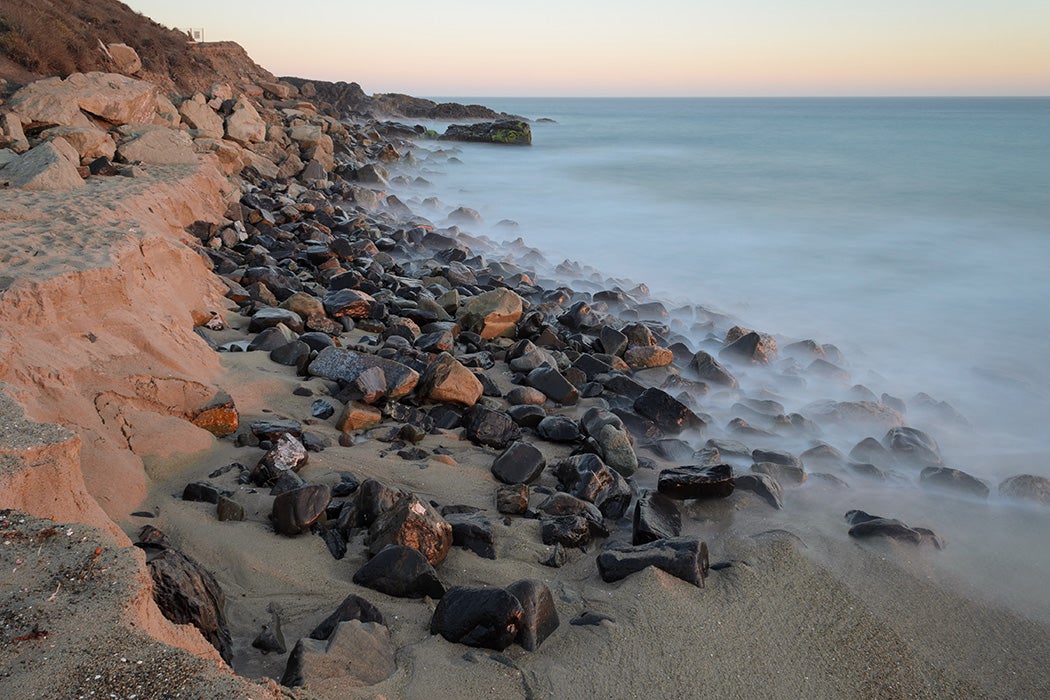In the first decade of the Cold War, California was in a drought. The coastline north of Los Angeles retreated inland by several hundred feet. Less water flowing to the ocean meant less sediment swept down rivers to replenish the beaches that the waves, left to their own devices, would eat away over time.
The ocean’s rapid encroachment wasn’t too unusual in the longer view of history, according to research published last year by earth scientists Julie Zurbuchen, Alexander Simms, and Sebastien Huot. They mapped the historical waterline over most of the last millenium near Ventura, California, with a blend of ground-penetrating radar, radiocarbon dating, and dosimetry (a measure of how long ago sand was last exposed to sunlight), among other methods, which helped pinpoint precisely where the beach edge used to be. Their analysis revealed that on timescales of decades, the southern California coastline often grew and shrank with natural cycles of drier and wetter periods in the Pacific that always seemed to balance one another out over the course of a century or so.
That balance is now likely at an end. California and the western United States face drier futures with climate change, and although there is already significant concern about how drought will continue to interact with agriculture, wildfires, and habitats, sea-level rise and coastal erosion tend to be part of an entirely separate climate conversation. Because drought is so strongly linked with natural shoreline retreat in southern California, it could further imperil attempts to shore up the coastline against sea-level rise.
Sea-level rise today is mainly linked to two related climate-change effects: meltwater from land-based ice, like glaciers, and seawater physically expanding to take up more space as it warms. Scientists have long known that sea-level rise is not uniform everywhere, thanks to both natural processes—like tectonic activity in a region, the gravitational influences on an area, and leftover rebound effects from the last ice age—as well as influences like excess groundwater pumping. The poorly recognized reality of sea-level rise is that despite the global scope of the issue, planning for the impacts must happen at a smaller scale—in part because researchers may unearth more unintuitive interactions in other coastal areas that complicate their own sea-level-rise prognoses.
Weekly Newsletter
As California emerges from its driest summer on record, the harsh reality of drier times ahead may be settling in on the Golden State’s 40 million residents. It remains to be seen whether a connection between drought and accelerated coastline loss inspires beachfront constituents to grow more proactive in addressing the ocean-sized elephant of sea level rise in the climate-adaptation room.







